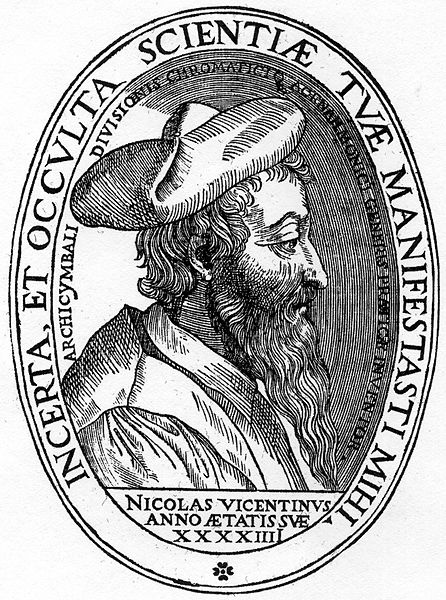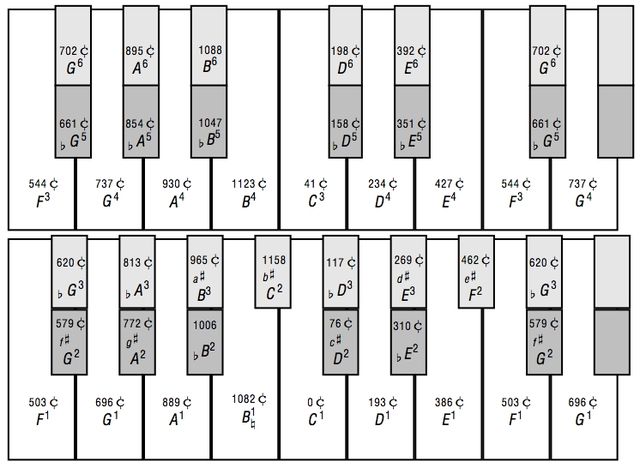Nicola Vicentino was an Italian music theorist and composer of the Renaissance. He was one of the most progressive musicians of the age, inventing, among other things, a microtonal keyboard.
Frontispiece in the Vicentino's treatise on music. Inscriptions: 1 (outer circle) Incerta et occulta scientiae tuae manifestasti mihi; 2 (inner circle) Archicymbali divisionis chromaticique ac enarmonici generis praticae inventor; 3 (under the portrait) Nicolas Vicentinus anno aetatis suae XXXXIIII
Cathedral of Ferrara. Ferrara was the principal center of chromatic experimentation in the second half of the 16th century.
Keyboard of the archicembalo
Renaissance music is traditionally understood to cover European music of the 15th and 16th centuries, later than the Renaissance era as it is understood in other disciplines. Rather than starting from the early 14th-century ars nova, the Trecento music was treated by musicology as a coda to Medieval music and the new era dated from the rise of triadic harmony and the spread of the contenance angloise style from Britain to the Burgundian School. A convenient watershed for its end is the adoption of basso continuo at the beginning of the Baroque period.
A group of Renaissance musicians in The Concert (1623) by Gerard van Honthorst
San Marco in the evening. The spacious, resonant interior was one of the inspirations for the music of the Venetian School.
Modern French hurdy-gurdy
Musicians from 'Procession in honour of Our Lady of Sablon in Brussels.' Early 17th-century Flemish alta cappella. From left to right: bass dulcian, alto shawm, treble cornett, soprano shawm, alto shawm, tenor sackbut.







